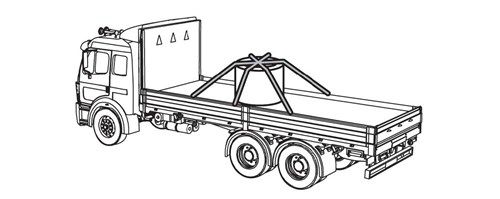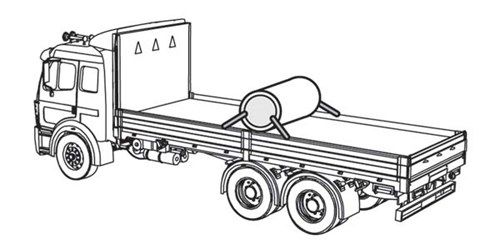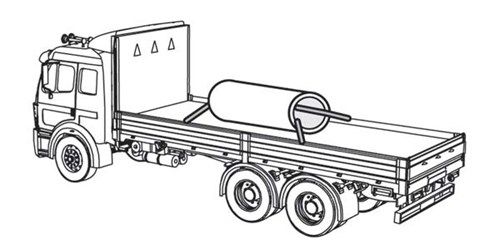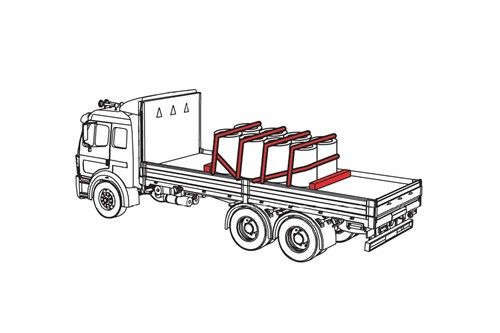Review Questions - Click On The Picture To Begin...

When securing a single metal coil with eyes vertical:
- Attach at least one tiedown over eye of coil from side-to-side.
- Attach at least one tiedown diagonally across eye of coil from left side of vehicle to right side of vehicle.
- These are all requirements.
- Attach at least one tiedown diagonally across eye of coil from right side of vehicle to left side of vehicle.
Quote From The CDL Manual:
To prevent the coil from tipping forward, rearward, and sideways, arrange tiedowns to include the following:
- Attach at least one tiedown diagonally across eye of coil from left side of vehicle to right side of vehicle.
- Attach at least one tiedown diagonally across eye of coil from right side of vehicle to left side of vehicle.
- Attach at least one tiedown over eye of coil from side-to-side.
Next
What is the minimum weight of a load of metal coils that requires specific securement practices?
- It depends on the size of the coils.
- 2,268 lbs
- 50,000 lbs
- 5,000 lbs
Quote From The CDL Manual:
Size of coil
All metal coil shipments that, individually or together, weigh 2,268 kg (5,000 lb.) or more must be secured according to the specific requirements in this section.
Exception: Metal coils that weigh less than 2,268 kg (5,000 lb.) may be secured according to general securement requirements.
Prev
Next
When securing metal coils with eyes vertical, the angle between tiedown and deck, if possible, should be:
- Between 60 and 90 degrees
- Less than 45 degrees
- 60 degrees
- 180 degrees
Quote From The CDL Manual:
- Attach at least one tiedown against front of row of coils to restrain against forward motion. If possible, angle between tiedown and deck should be less than 45, when viewed from the side of the vehicle.
- Attach at least one tiedown against rear of row of coils to restrain against rearward motion. If possible, angle between tiedown and deck should be less than 45, when viewed from the side of the vehicle.
- Attach at least one tiedown over top of each coil or side-by-side row of coils to restrain against vertical motion. Tiedowns going over top of coil(s) must be as close as possible to eye of coil.
- Arrange tiedowns, blocking, or bracing to prevent shifting or tipping in all directions.
Prev
Finish
Please select an option











 TT On Facebook
TT On Facebook